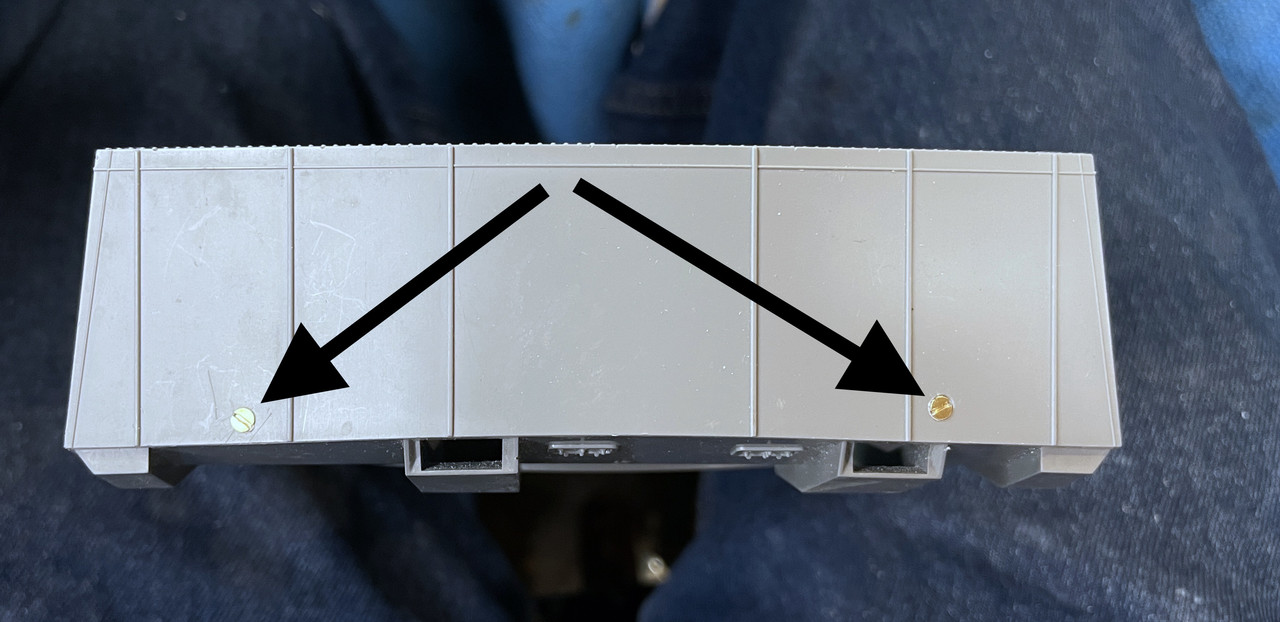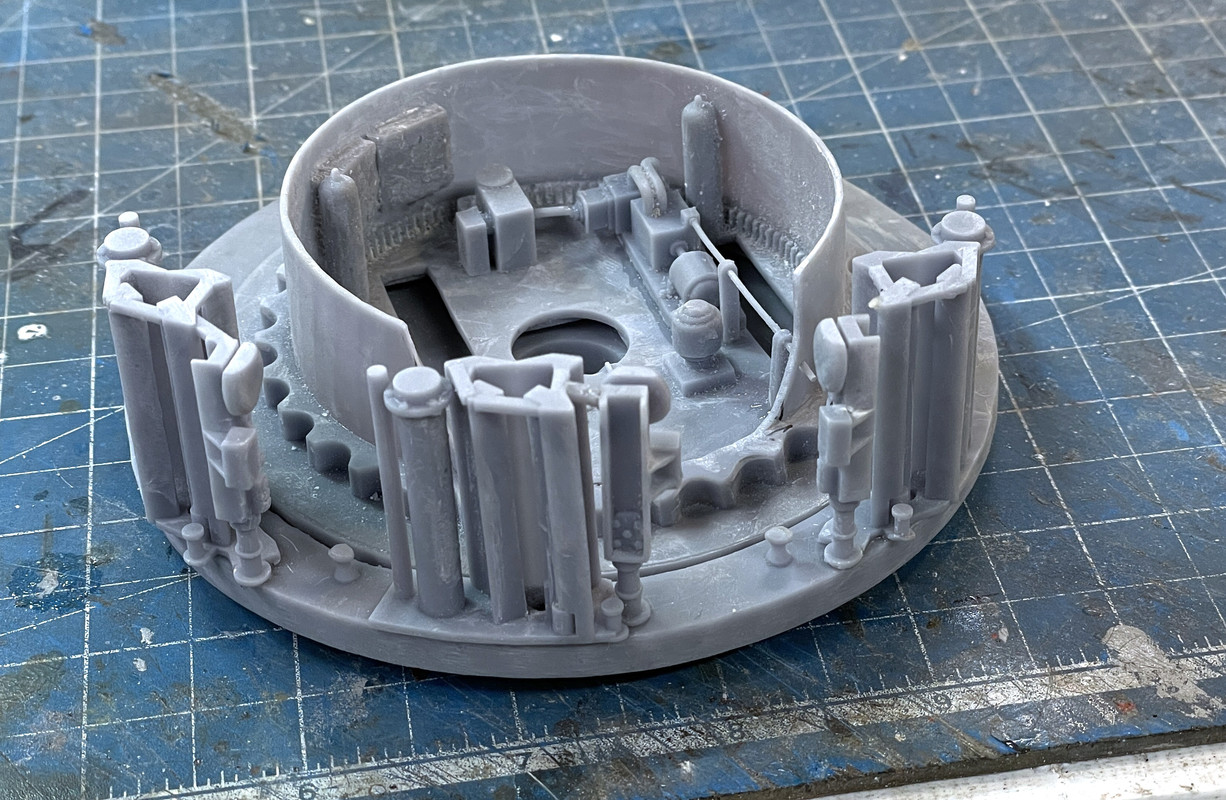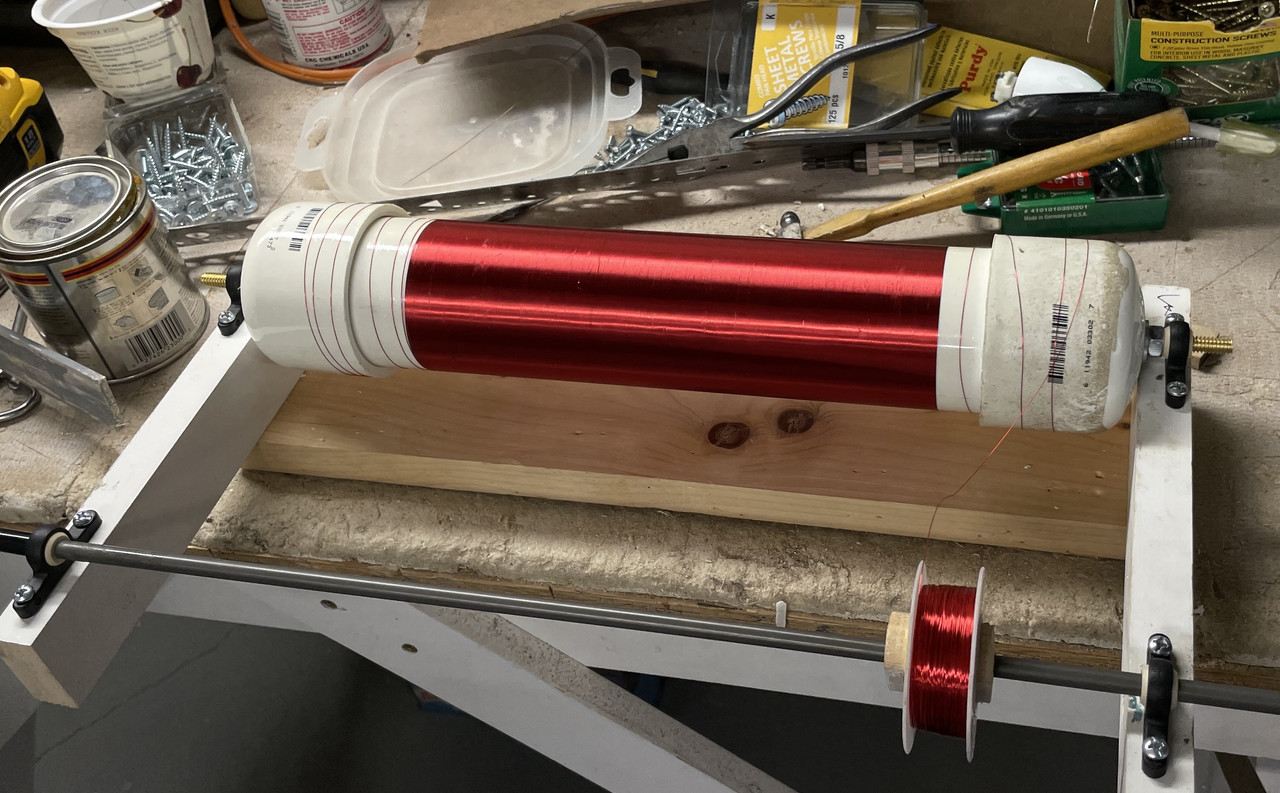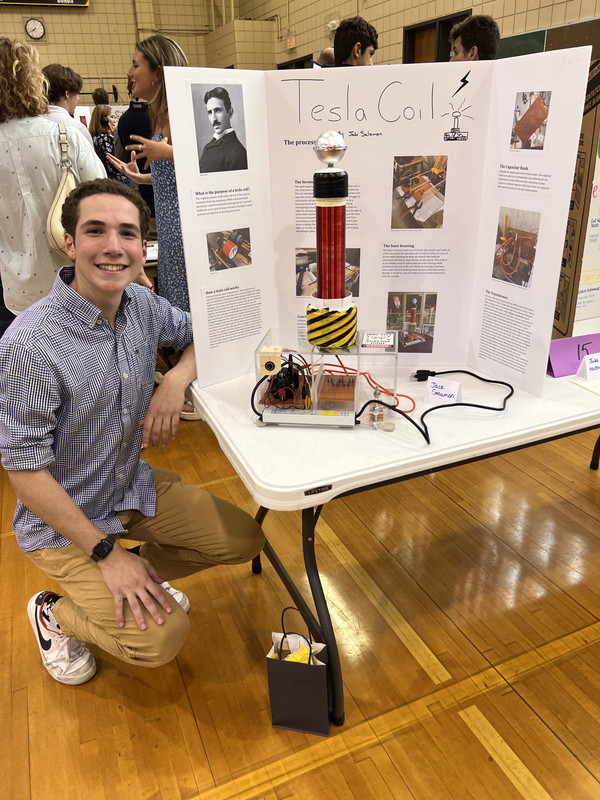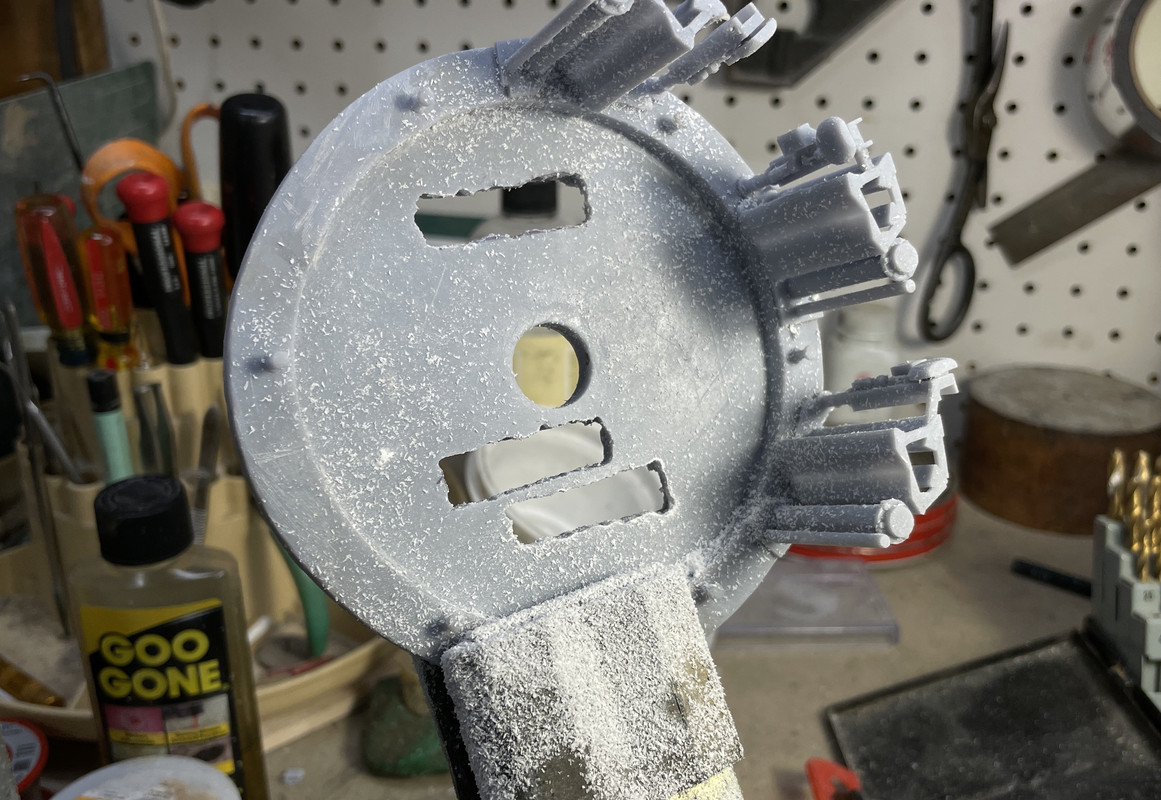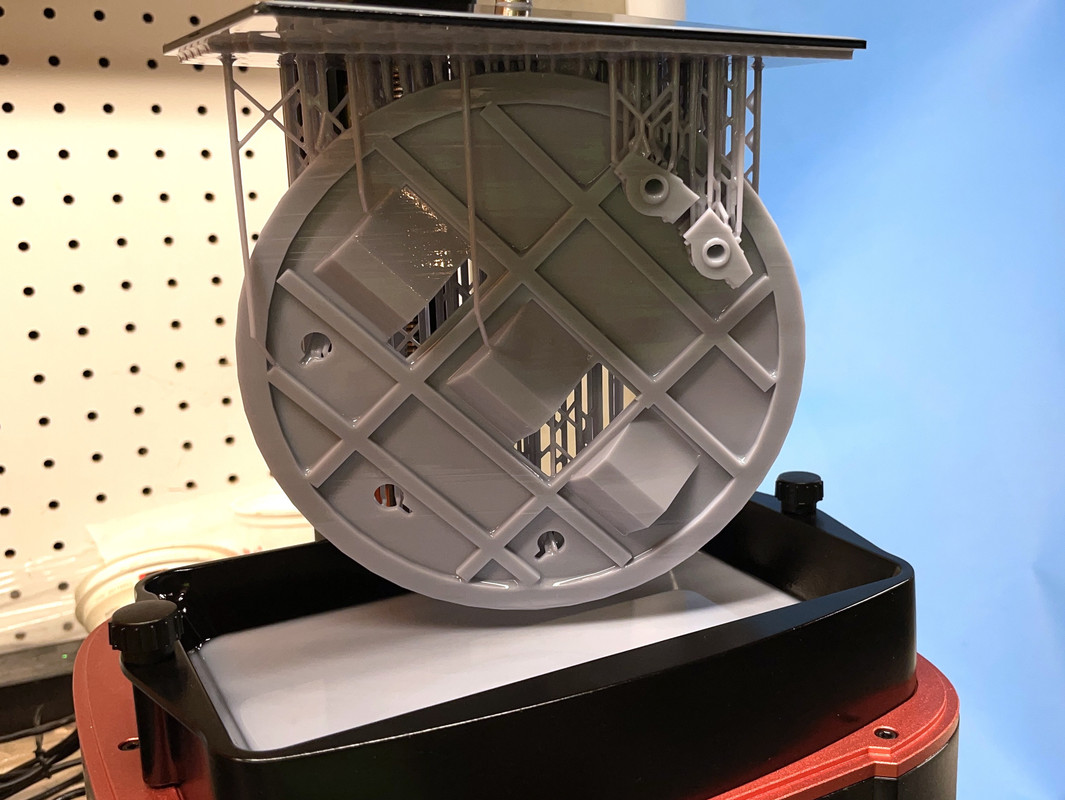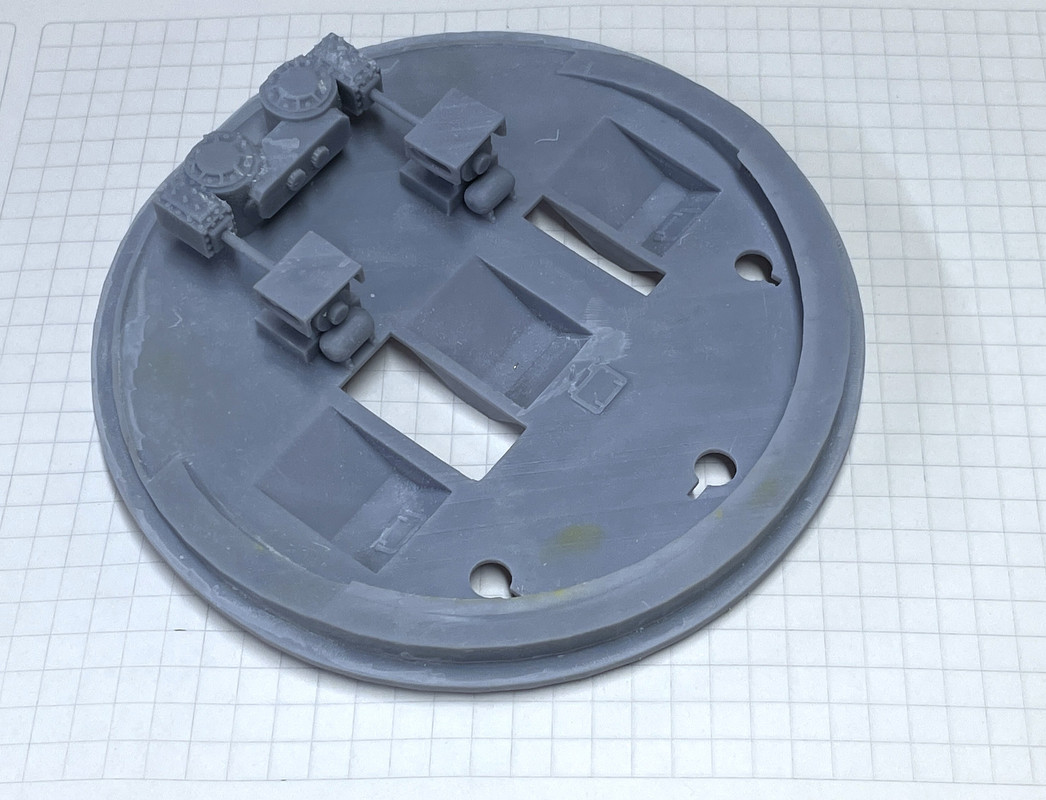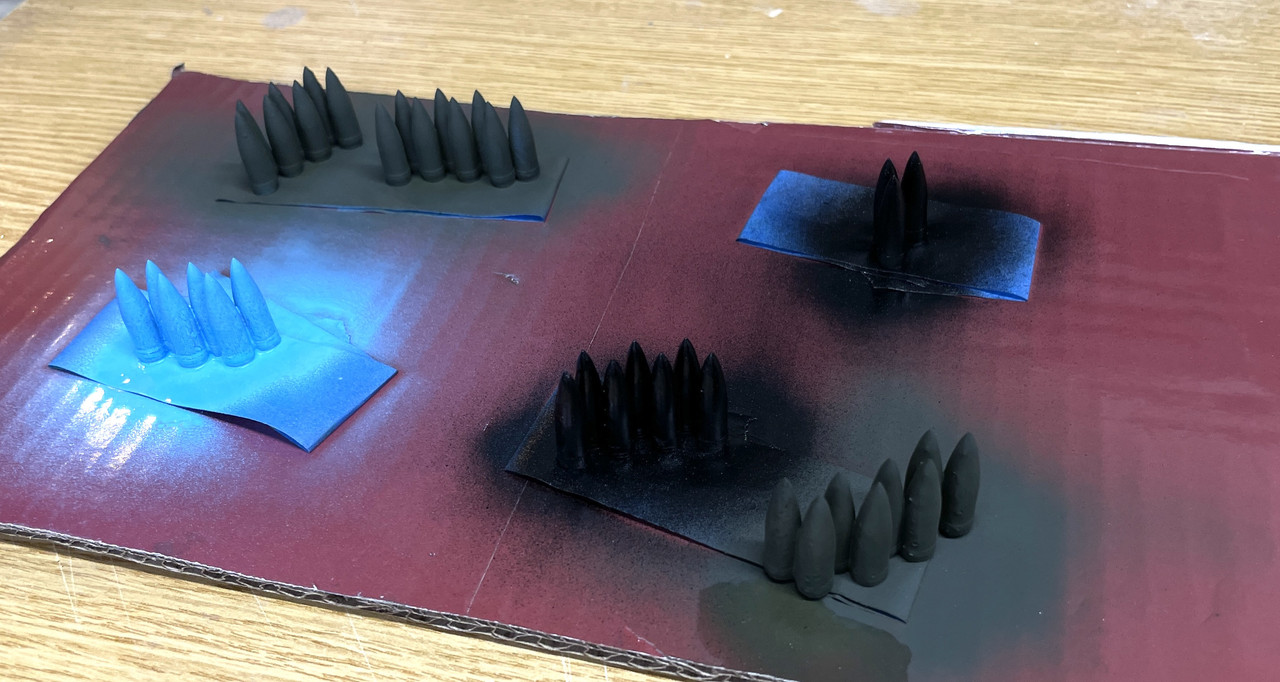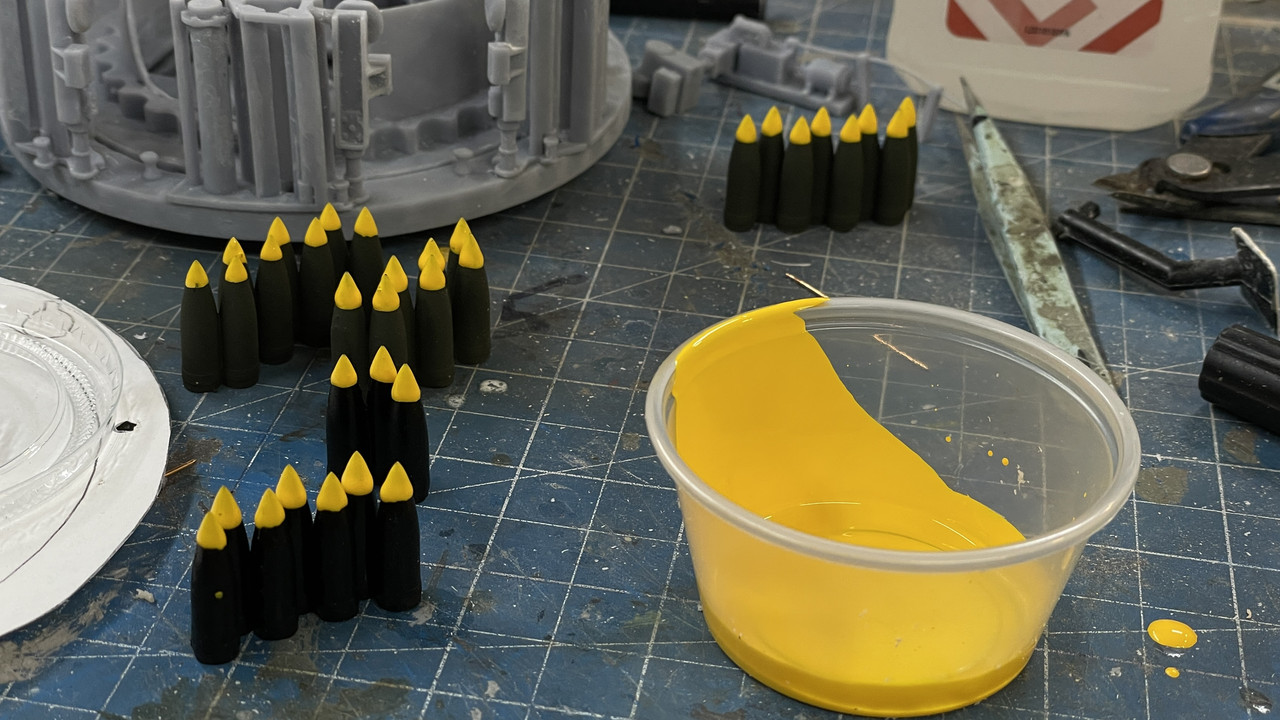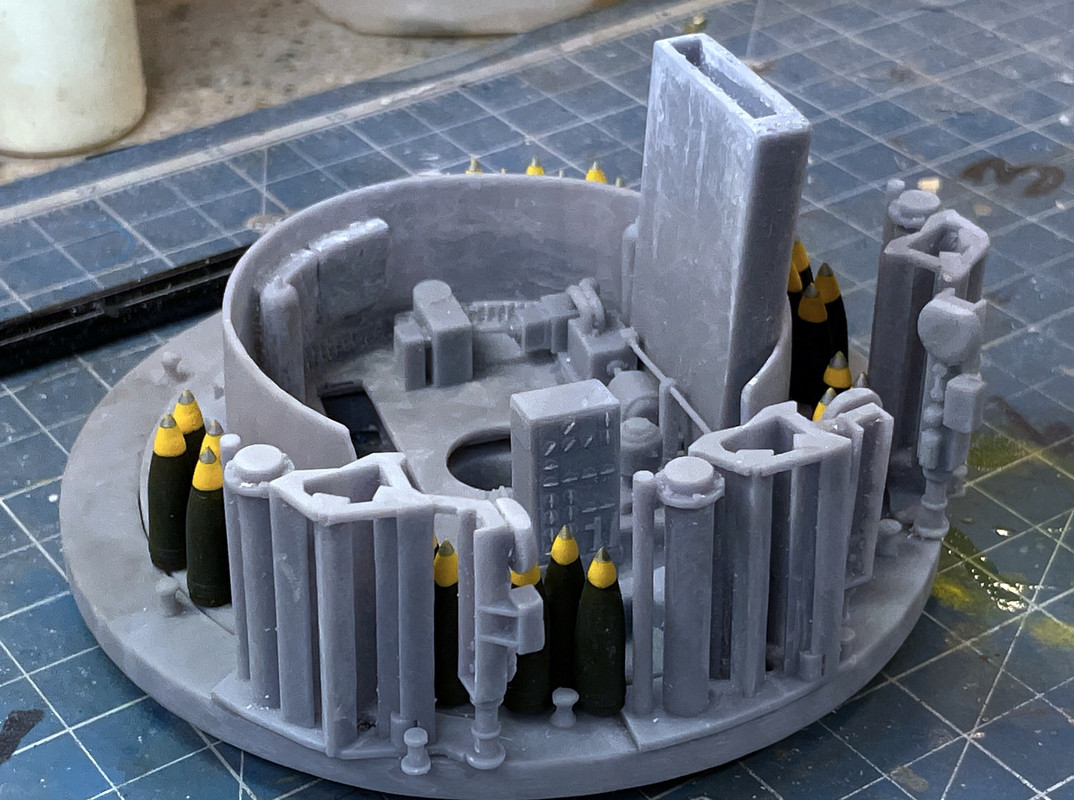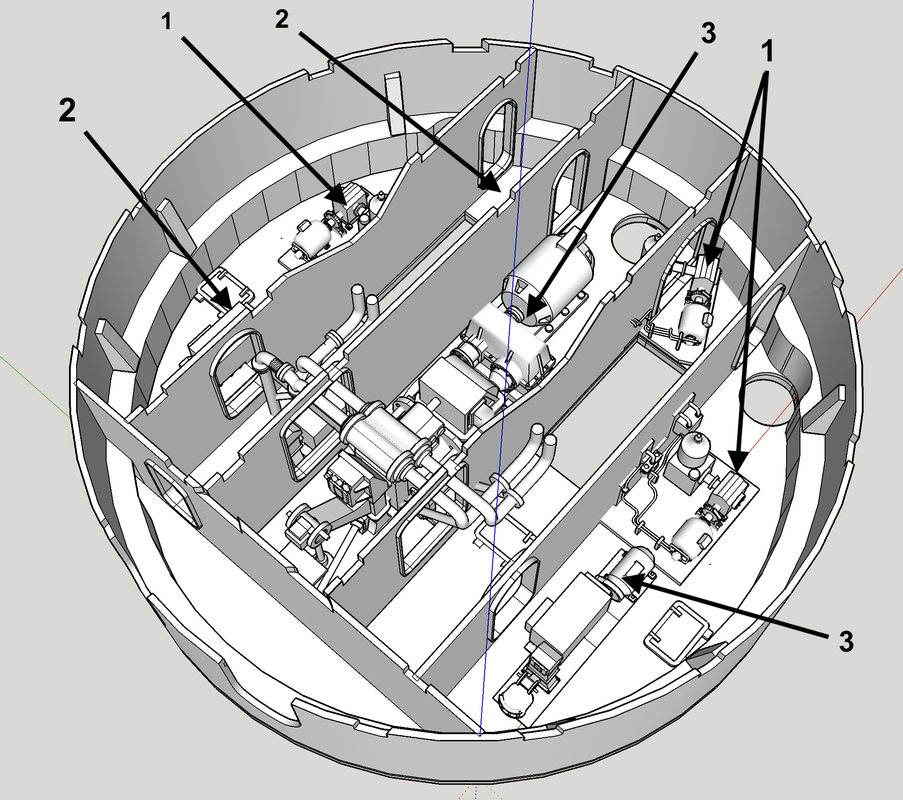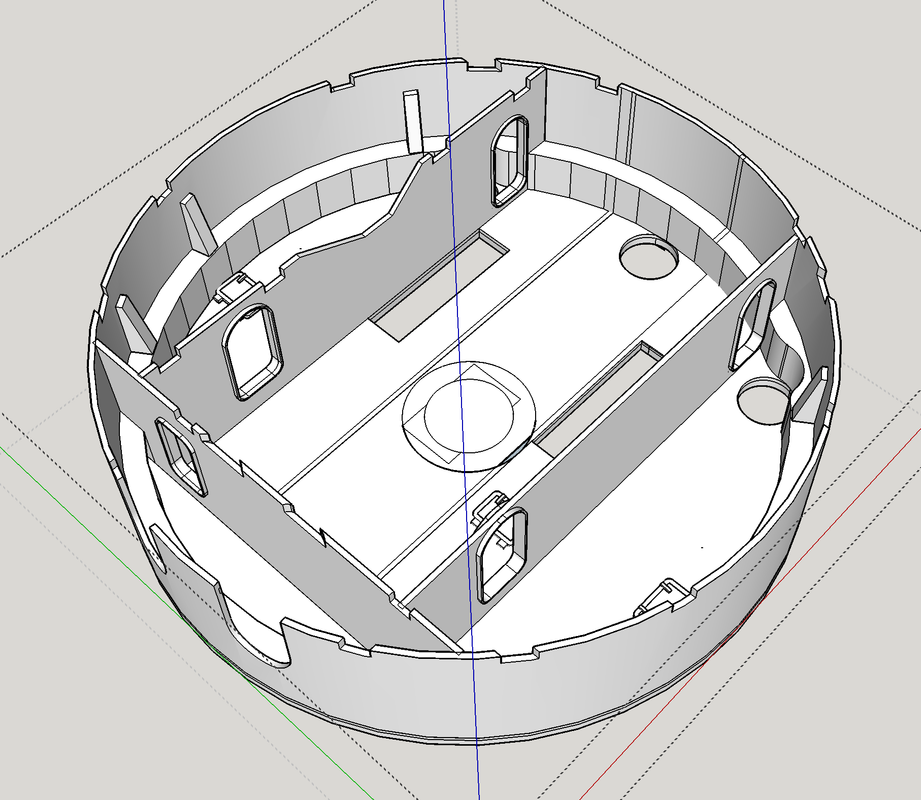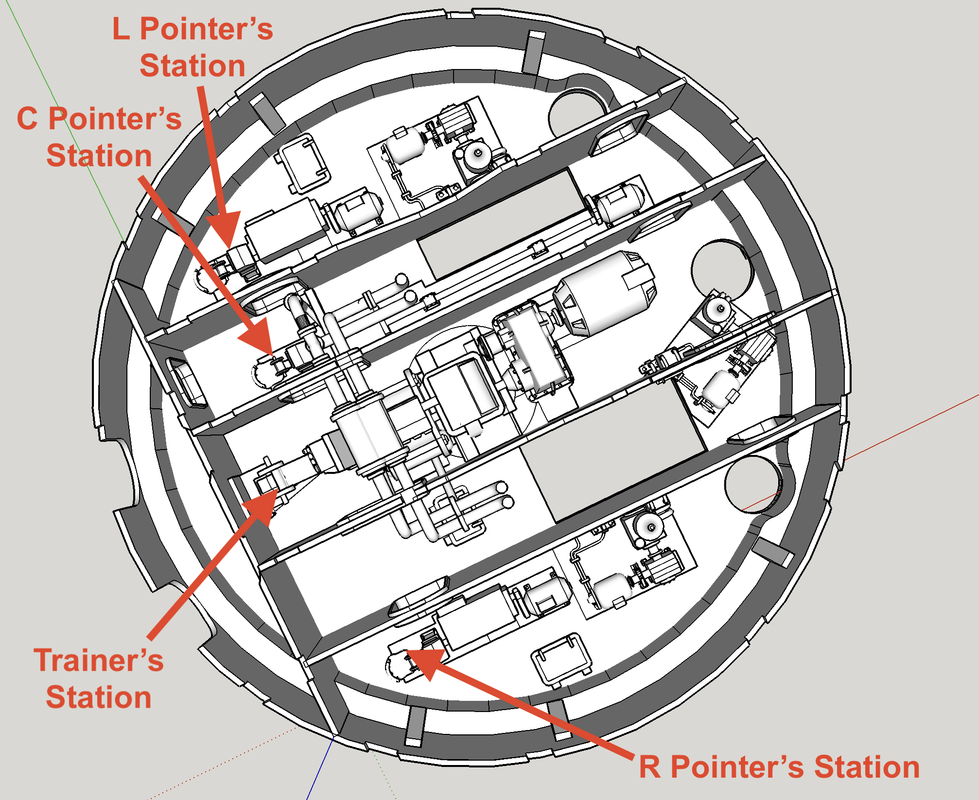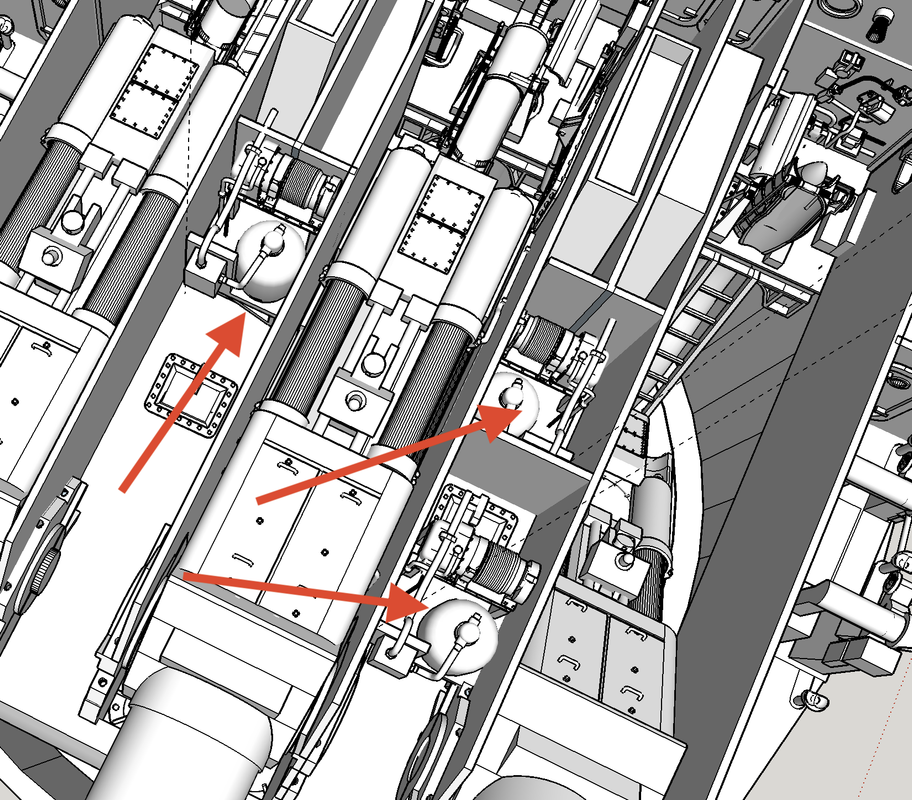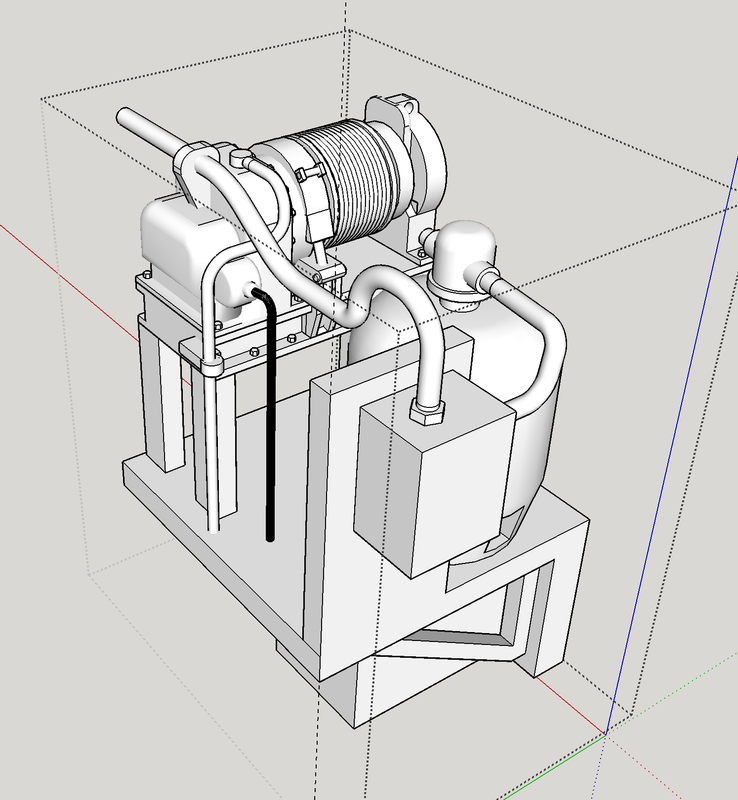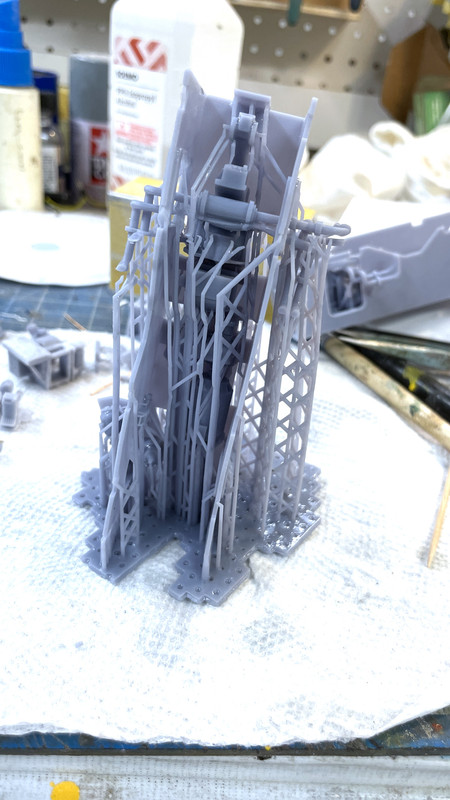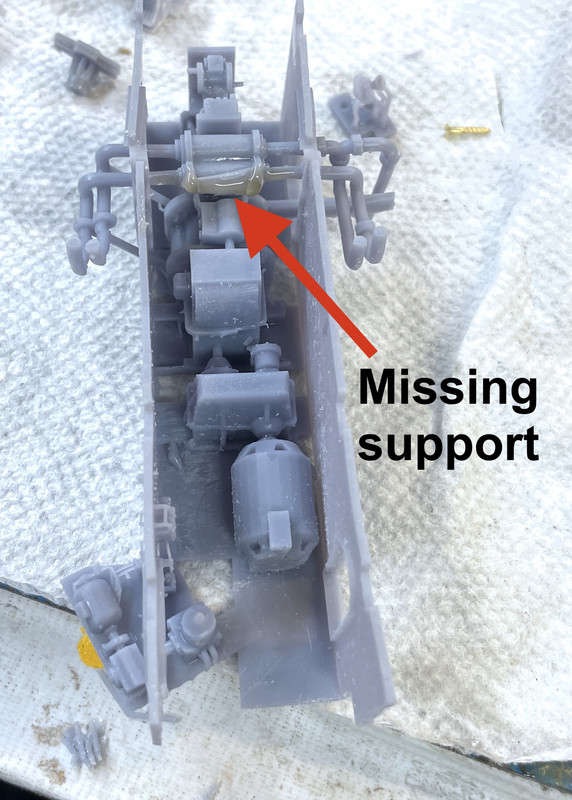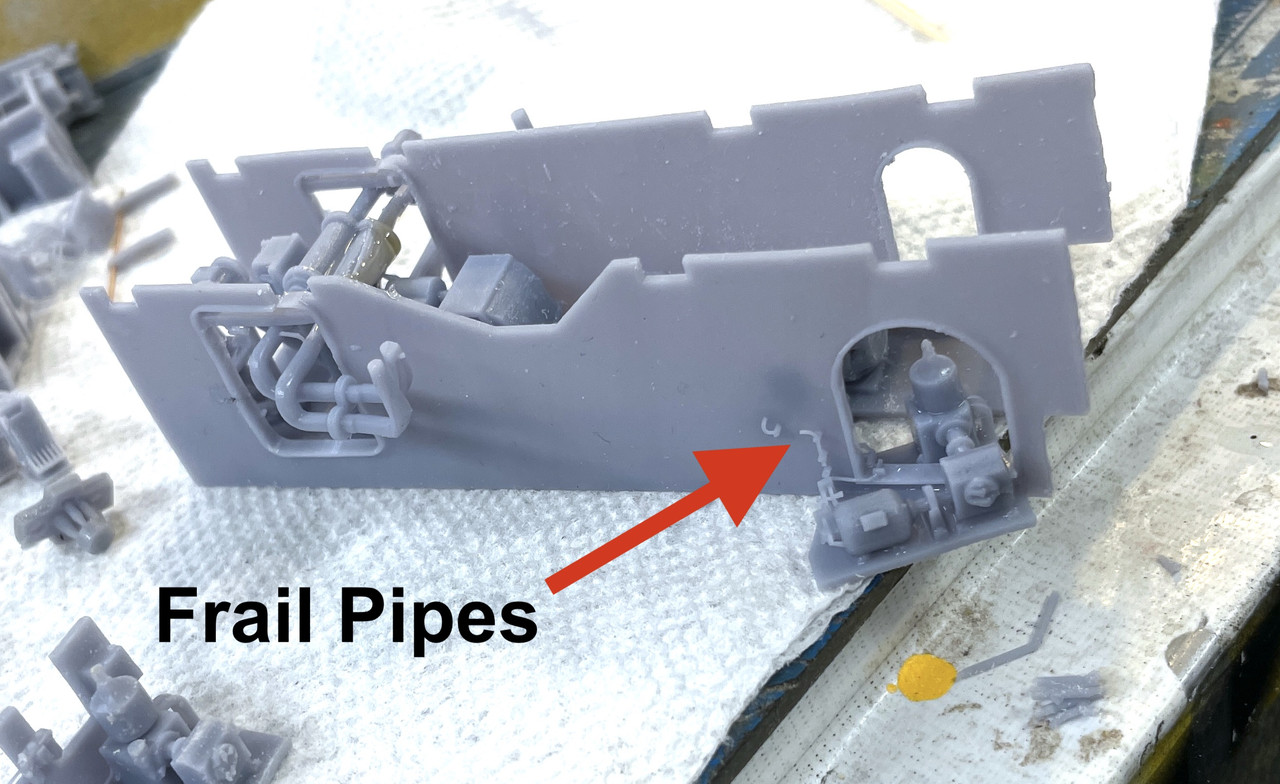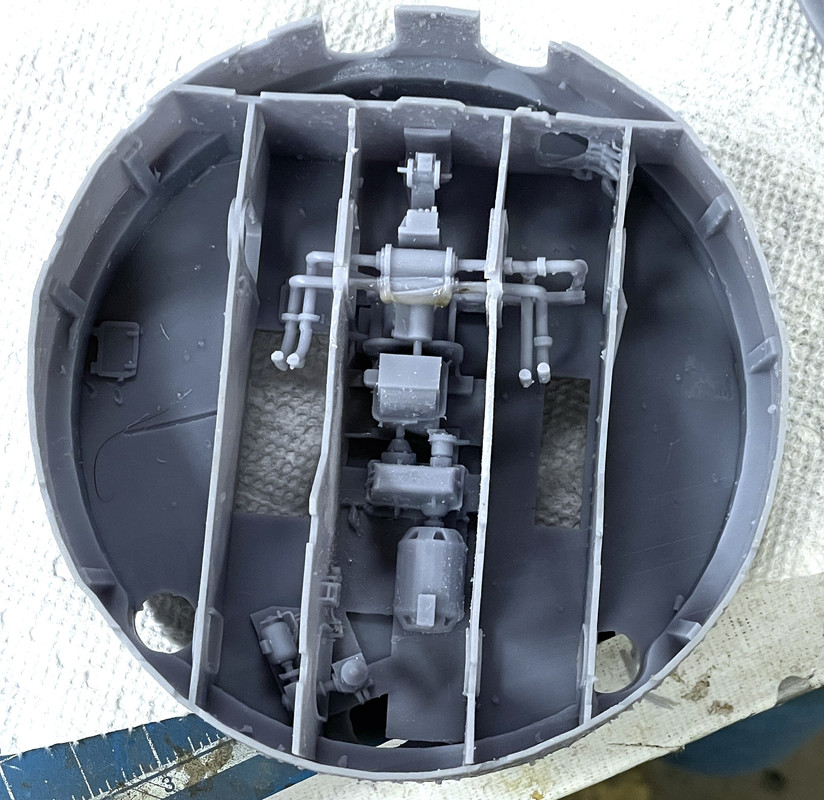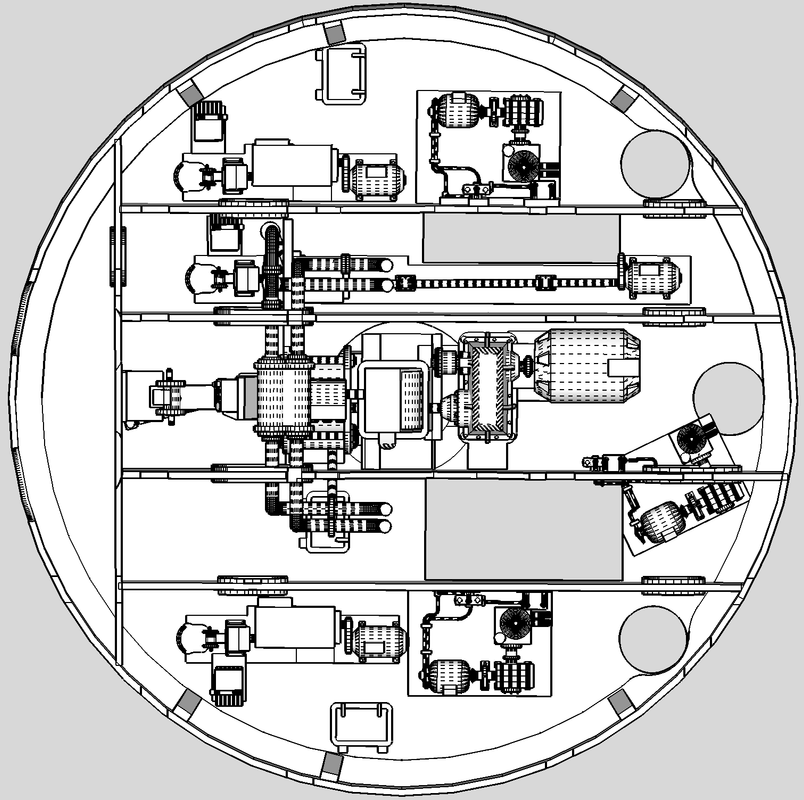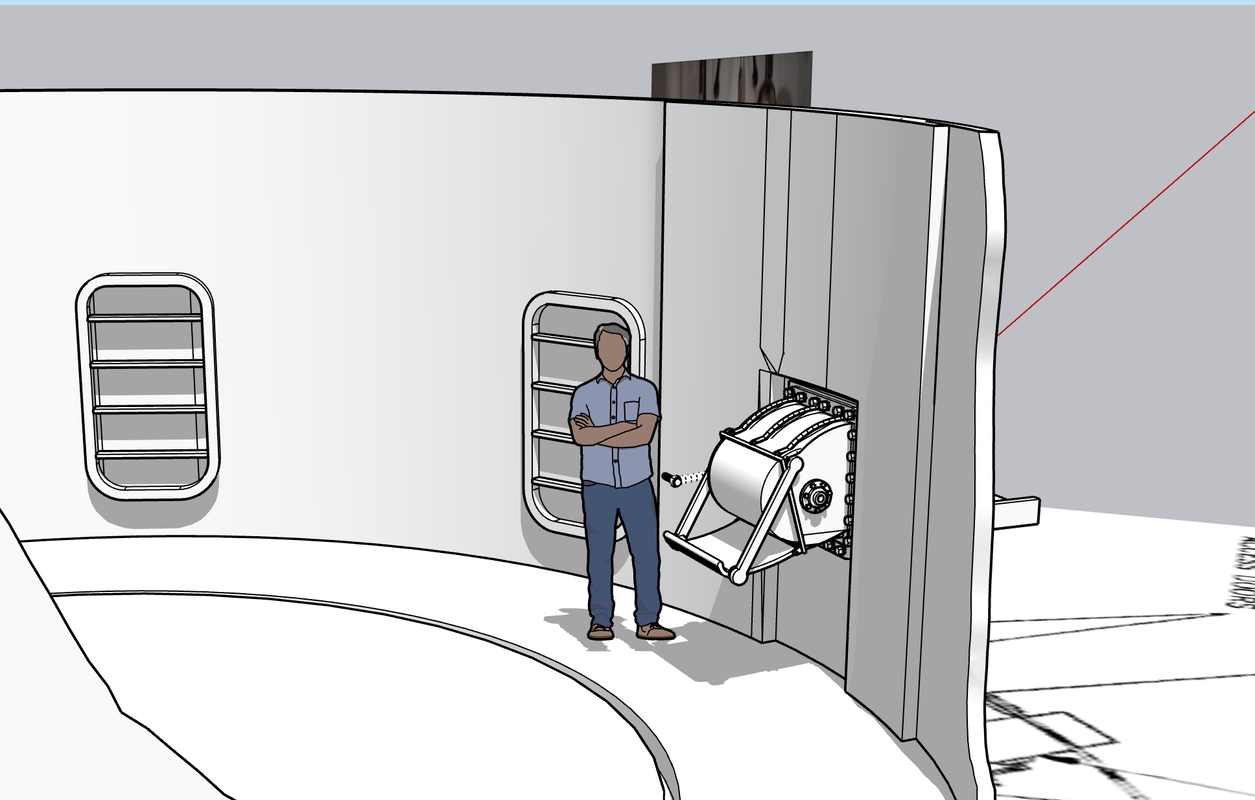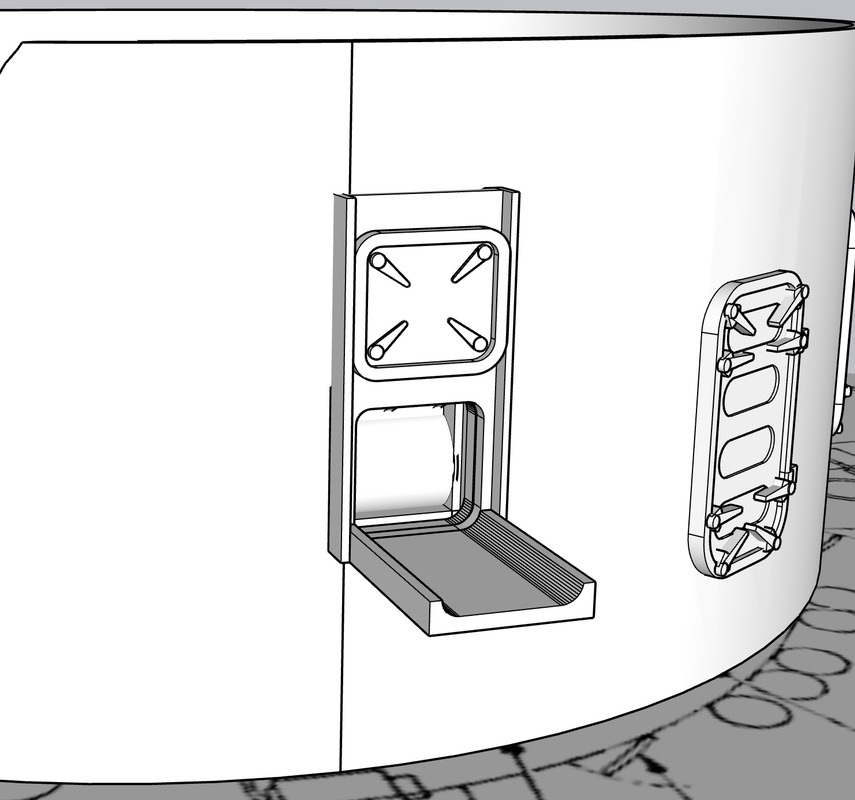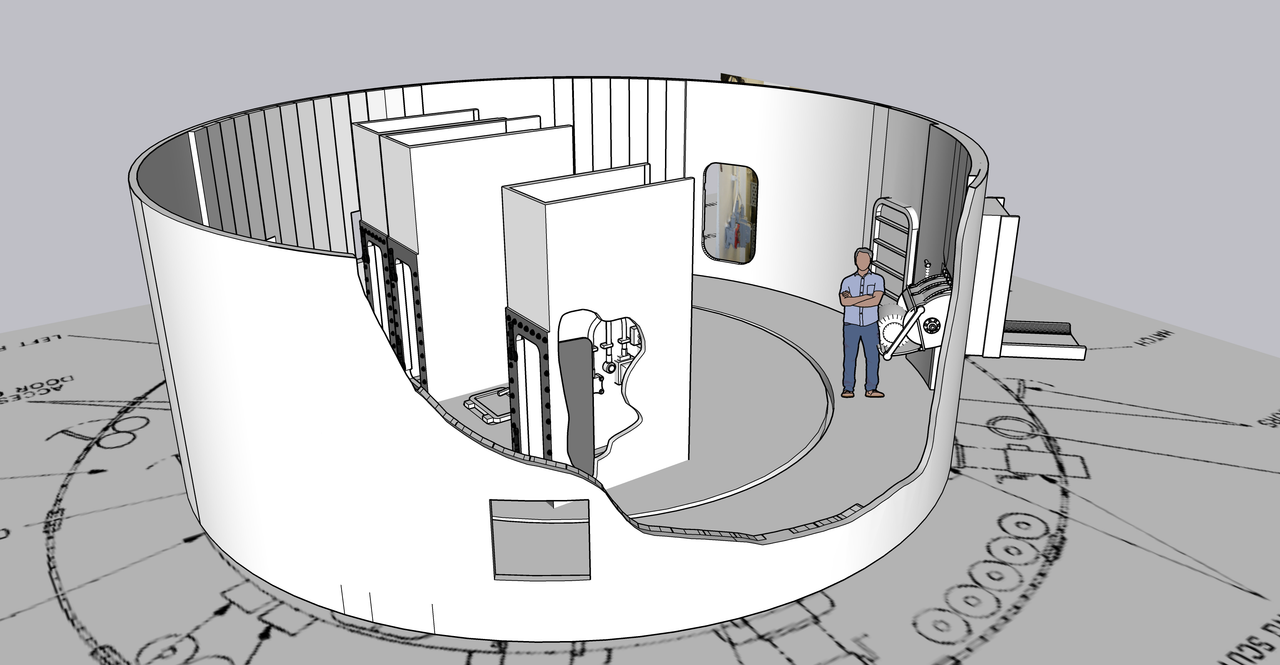I rescheduled the Big J tour for the last week in this month. The way things are going I won’t be beyond the point of no return, so if I’m making any horrific errors, I will be ale to fix them. Meanwhile, So much of what I’m modeling is off-limits to the public, whatever I detail is far more than they’ll ever see for themselves and if I can’t decipher just what’s going on in some of the line drawings I have with the hours and hours I’ve spent reviewing them, not too many other people will be able to discern any errors either. At least I hope so.
Much of my work of late has been print, fix, print again, fail, and print again. With prints lasting 7 to 11 hours, I print them overnight when I can and then see what I got in the morning.
I finally got the powder trunks sized reasonably close. They were too big and when I added the various decks, if I moved them forward, they would stick out through the wall and if I moved them back, they would stick out there. They were interfering with equipment that had to be placed in the various decks. It took hours of trial and error to keep changing their size (and angle) to get them to work. They don’t just go straight down from the gun house to the powder flat. They proceed down in an angular path that changes as it goes down.
Changing the size changed the opening in the various decks. SketchUp can be a complete pain in the butt. It has the nasty habit of closing opening in surfaces when you add a line that shouldn’t actually do that. And then you can’t seem to get the surface to open again. This gets exasperating and can eat up hours of fussing on what should be a simple task. I used the “Interact Faces” with the trunks and decks to have the surfaces in which I want the opening to be. The result is a bunch of rectangles that are shapes that should be actionable. So then one trunk’s rectangle works perfectly, but the other is still attached to the existing surface and no matter what I do, I can’t get it to behave separately. Often I mess with it so long that I screw up other aspects of the part that have to be redrawn.
I had a couple of weird failures. The roller track assembly had some support failures that caused distortions, but it didn’t matter because I created the assembly with the wrong roller track. It should have been the lower, plain track. Instead, I combined the rollers with the track with the ring get, which BTW printed very nicely as a single piece, eliminating the out-of-round creation I made with the four-part gear.
Printing the rollers as a single part saved me a lot of very difficult work if I were to go with my original idea; assemble the roller assembly from separate rollers and pins, which I actually never figured out how I was going to.
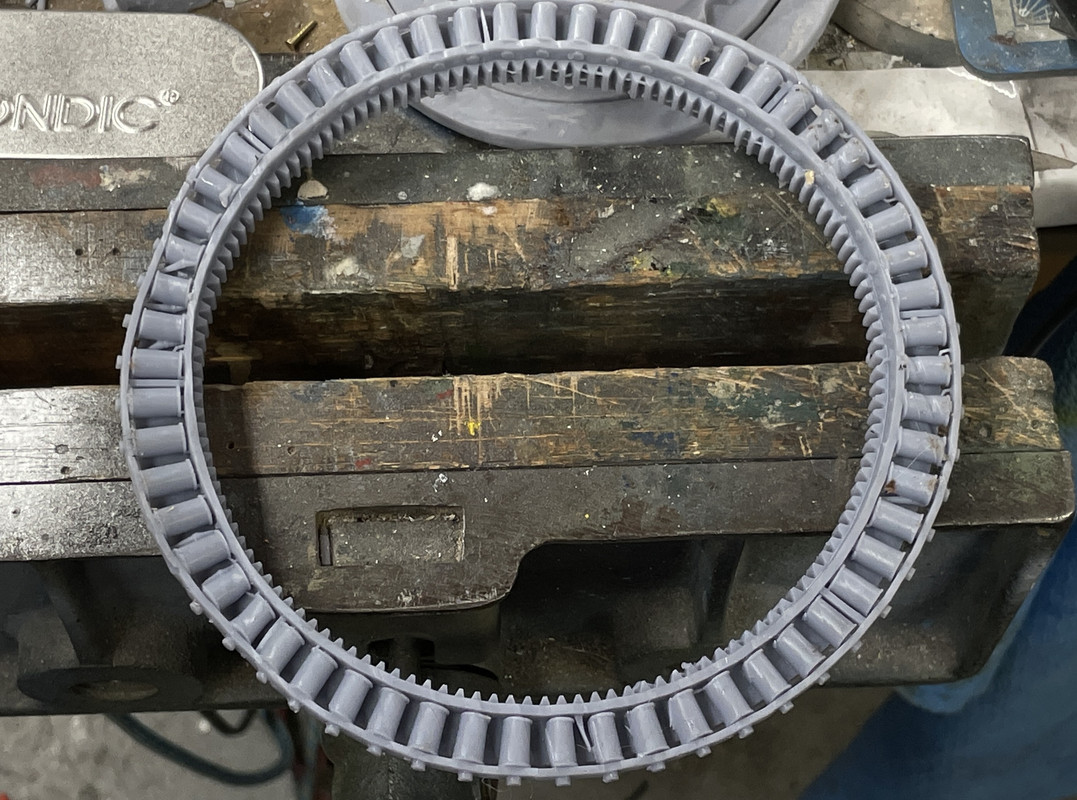
This side image shows the distortion from the localized support failure.
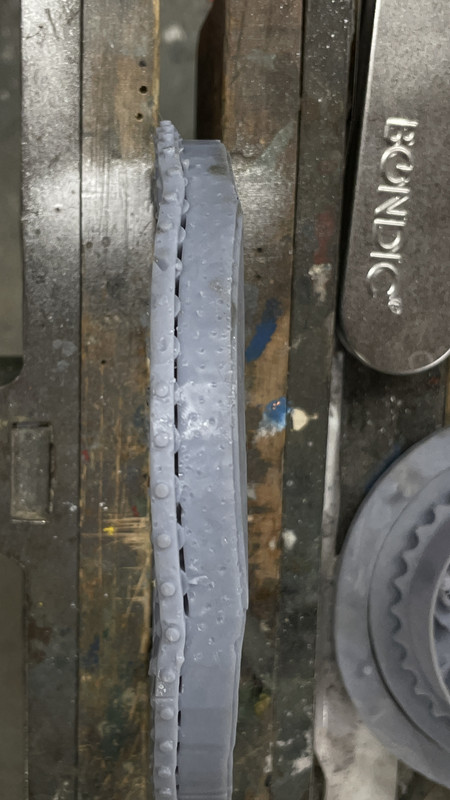
I’ve re-drawn this assembly with the correct race and set it up a bit differently to prevent the support weakness.
The diamter of the parts for this project are literally at the limits of my Mars 3 printer. This is the ring gear when it finished. If I tilted it or rotated it in either direction some portion of the part was out of the print range. It’s lucky I’m doing 1:72. Any larger scale would not work. There are bigger LCD printers on the market now, so if there’s a 1:48 in the future, it would require a completely revamped shop situation.
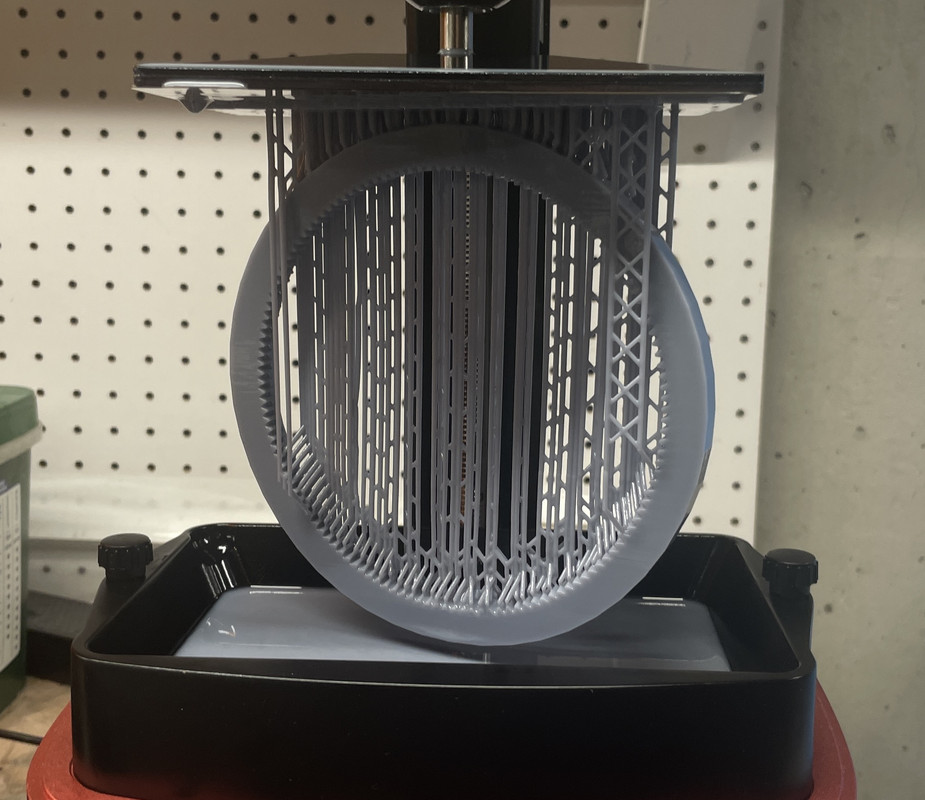
Here’s the gear flopped on top of the pan deck base with it’s pinion gears on the bottom.
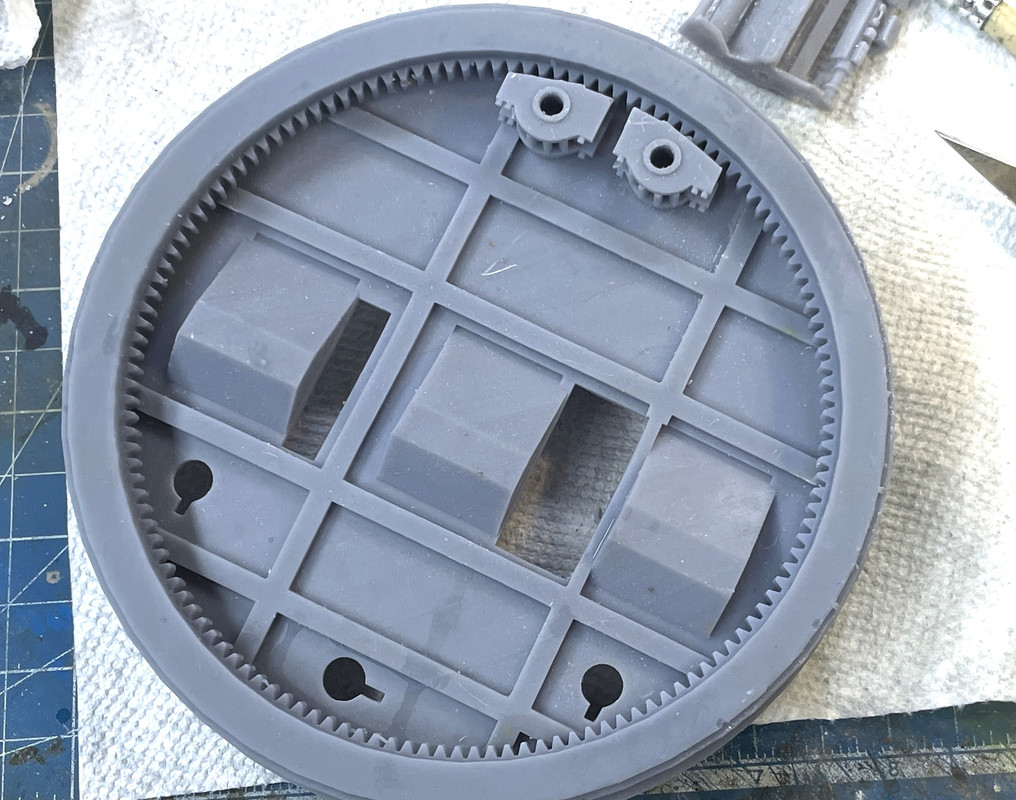
A complicated print was the machinery on the electric deck AND the center two partitions, the training machinery and the angled projectile hoist pump assembly for the middle gun. The machinery itself almost printed… the partition walls failed and distorted terribly. The little separate machines (other pump systems and two of the Pointers stations) printed quite nicely and are usable.
Here’s a down-the-line view of the partition assembly. You might notice that the big 300hp motor that supposed to be in the foreground, didn’t print either. Two factors were at play. I didn’t use enough heavy supports and relied on the light ones to do more work holding it all up too much. And the partition walls themselves were too frail at the tiny portion over the too passageways on the foreground end. The walls themselves couldn’t withstand the pulling forces in play in this printing process. I redesigned the walls at those weak points and used more heavy supports especially on the bottom end of the big motor. In the foreground is that smaller pump unit. While it was somewhat usable, I scrapped it along with the rest.

The side view shows the massive distortion and the break at the passageway.
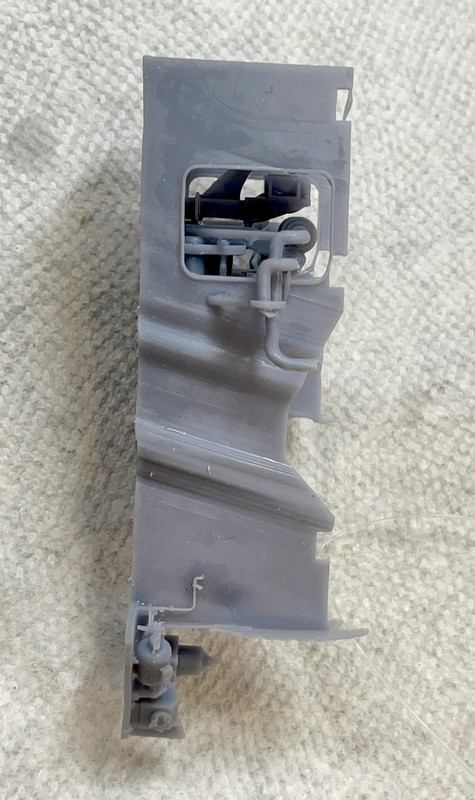
It’s on the printer now and will be done sometime in the middle of the night. I’ll know tomorrow if my solution was the correct one. You can see some of the fine piping didn’t make it through the support removal process. I also lost some seats so I’m printing a whole bunch of them with the job that’s now on the machine so I’ll be able to replace them. They’re very delicate.
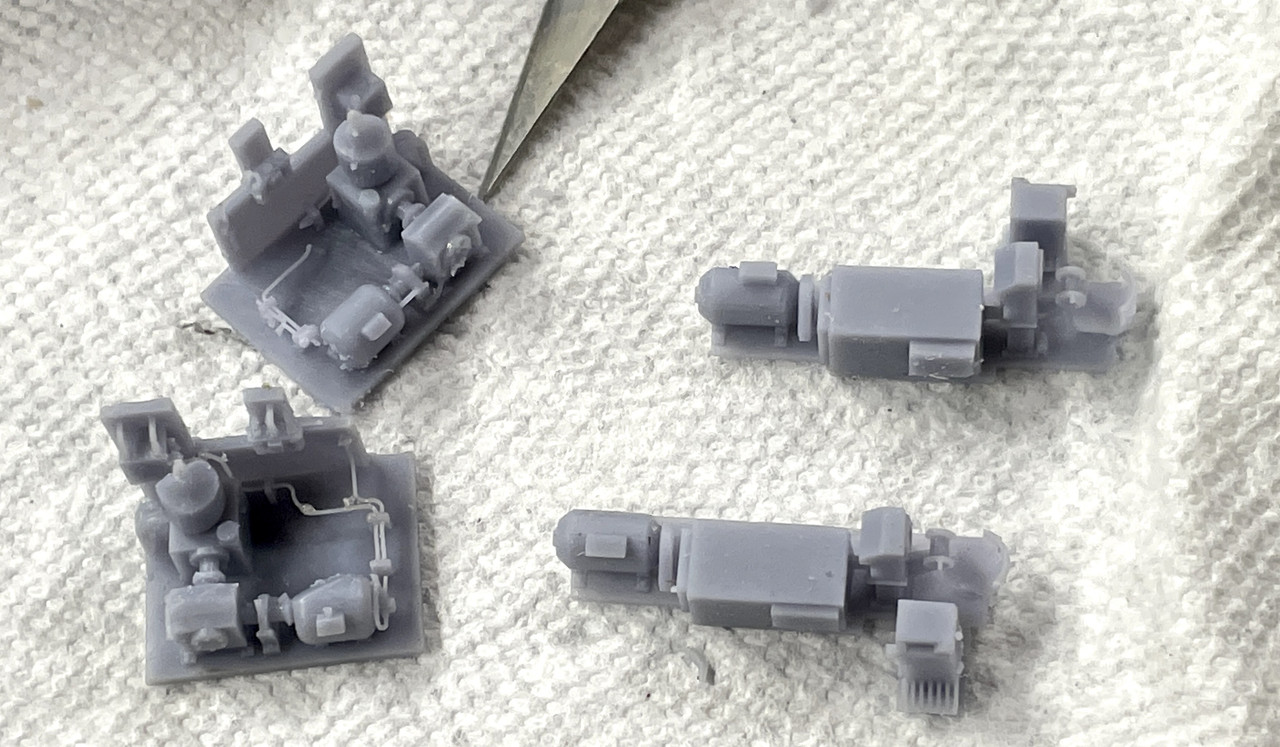
I printed another batch of machiness. This included the center pointer’s station with it’s long drive shaft separating the motor from the hydraulics. This is necessitated becuase the port side powder trunk passes through that area. I also printed the re-designed hoist machines complete with their motors, pumps and pipping. I’m finding, that while beautiful, using scale 1 to 2 inch piping is almost too small to work in 1:72 printing.
I had two failures in this print, again due to supports that were too frail. I need two of one hand and one of the other for the hoist machines. I made six, but the two I scrapped were both of the opposite hand. So I have four of the same orientation. I’ll pick the best two.
Here are the hoist machines and the center pointers system. You wanted something to show scale. That’s my finest point tweezers in the image. All four of those hoist systems are the same orientation.
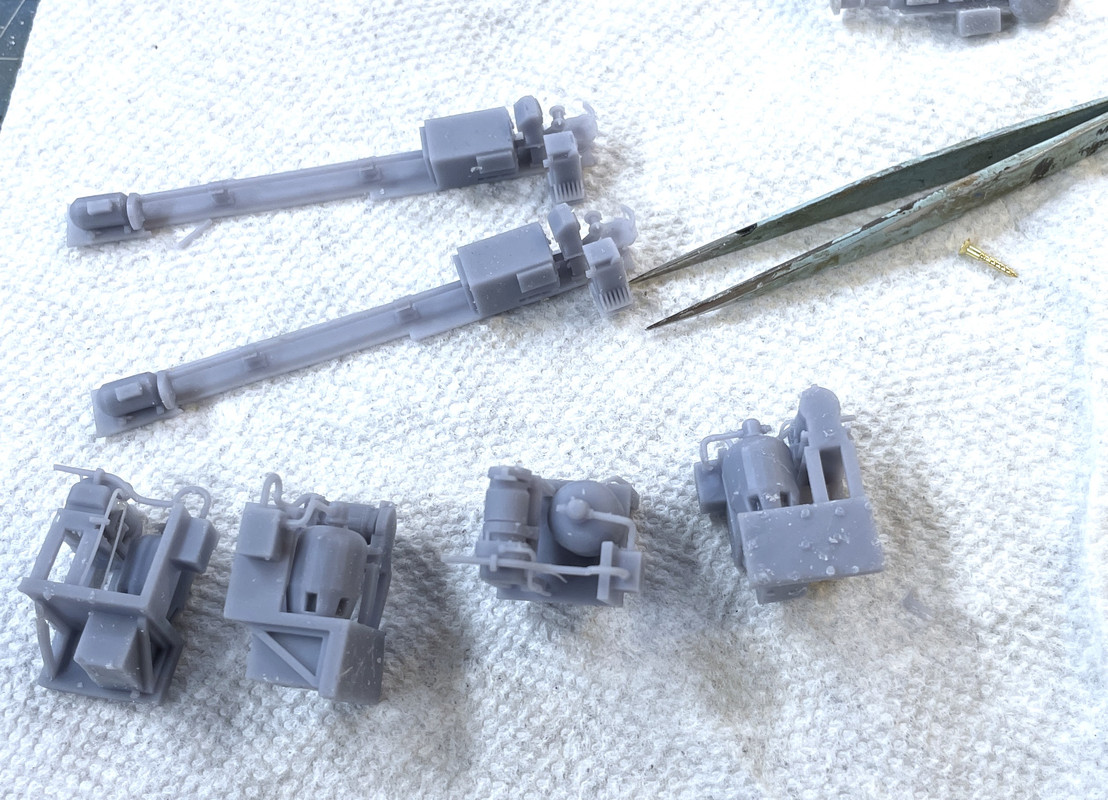
Wish me luck. I have to print and new electric deck, new pan deck base, two projectile flat inners and one outer, the powder trunks (multi-part due to their length) and the hoist operator’s stations.
Here’s the hoist station. It is not completely accurate. The operating handle isn’t right, and hopefully, I’ll be able to view inside that compartment when I take the tour.
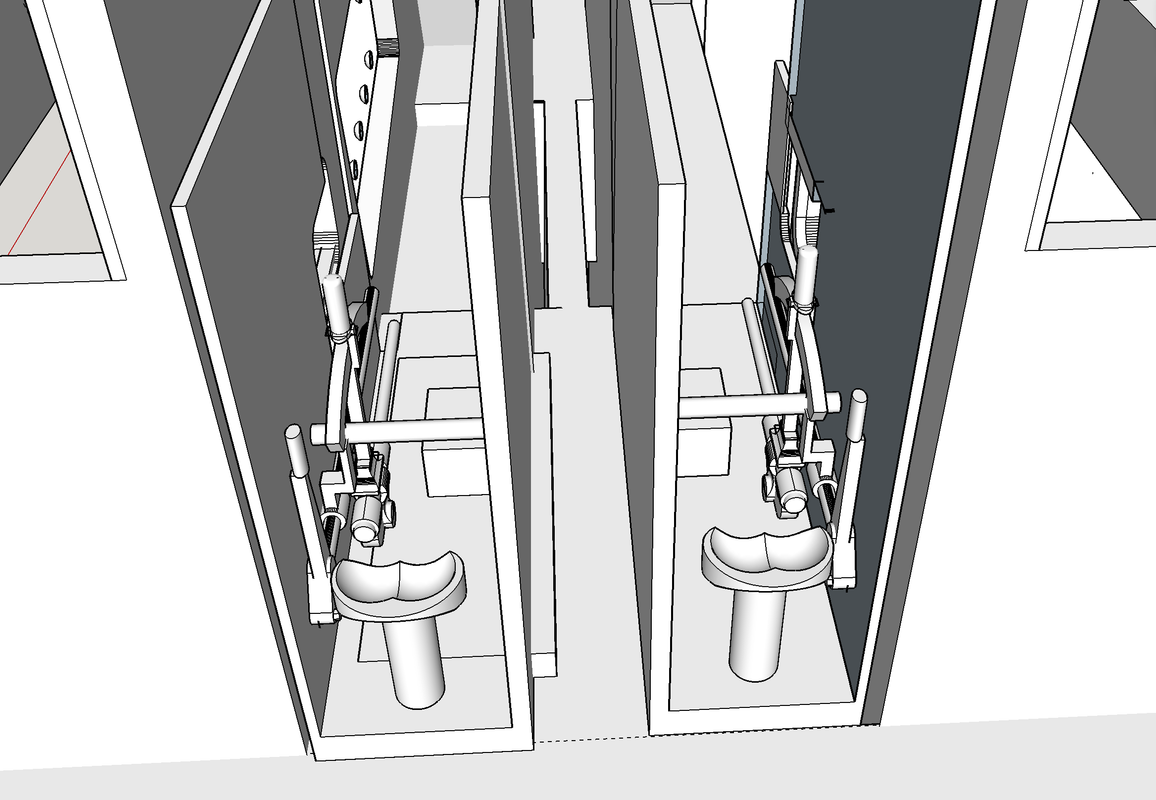

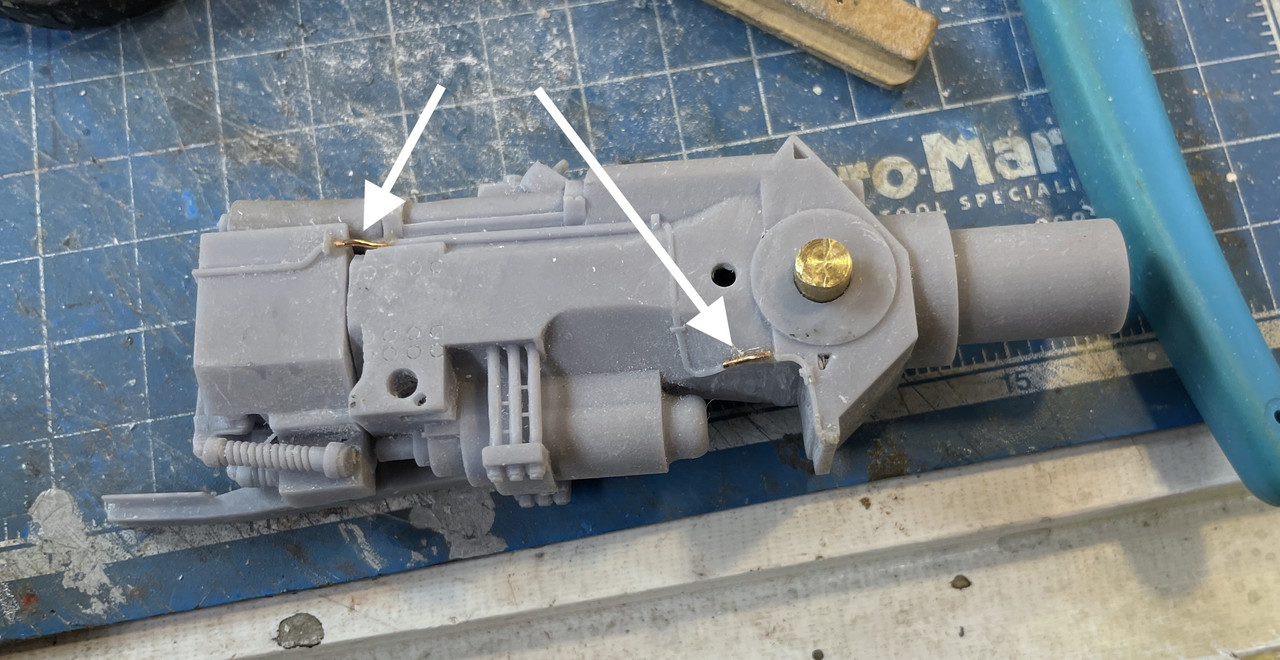
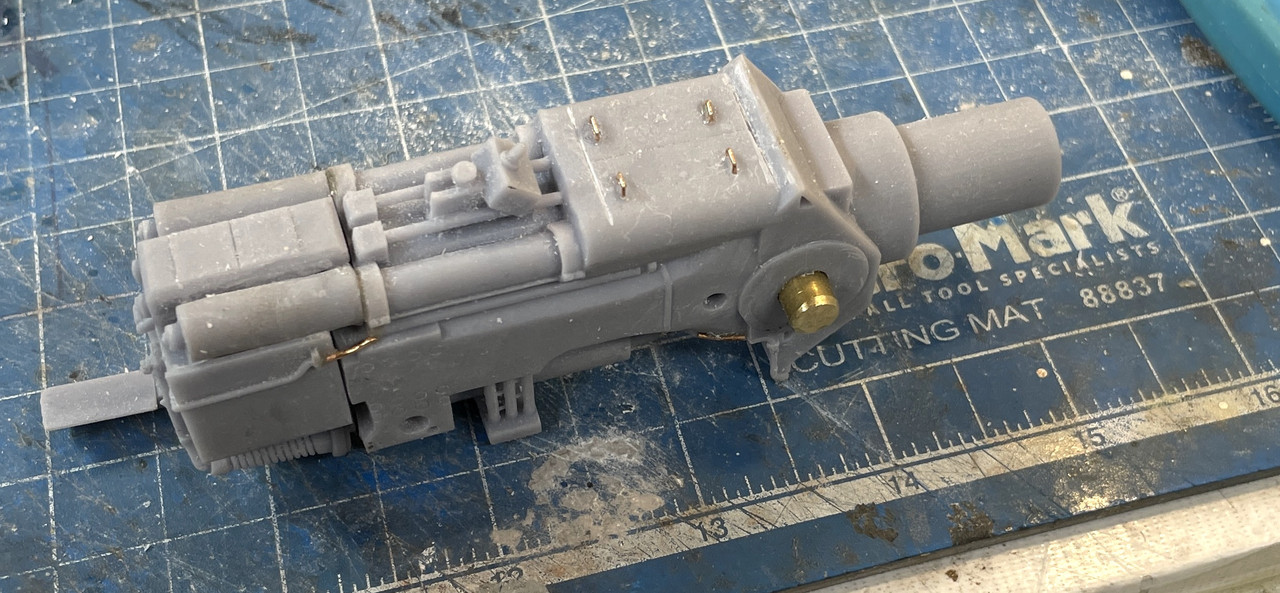

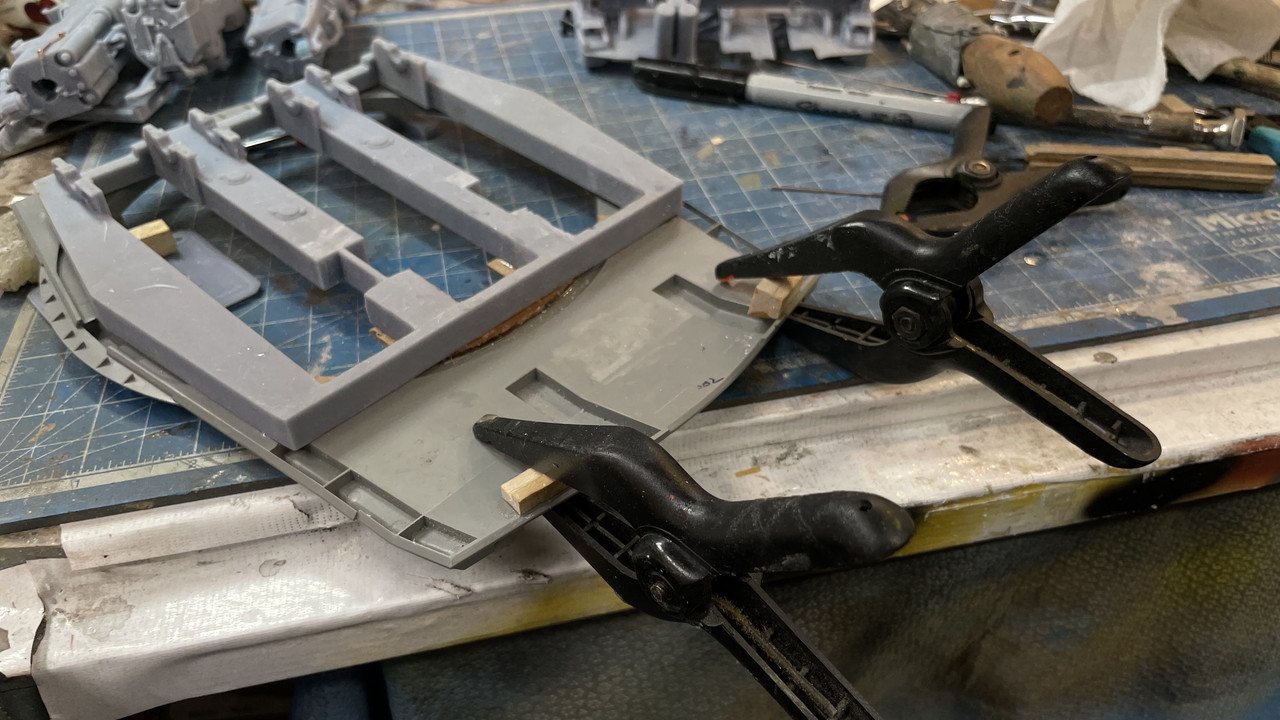
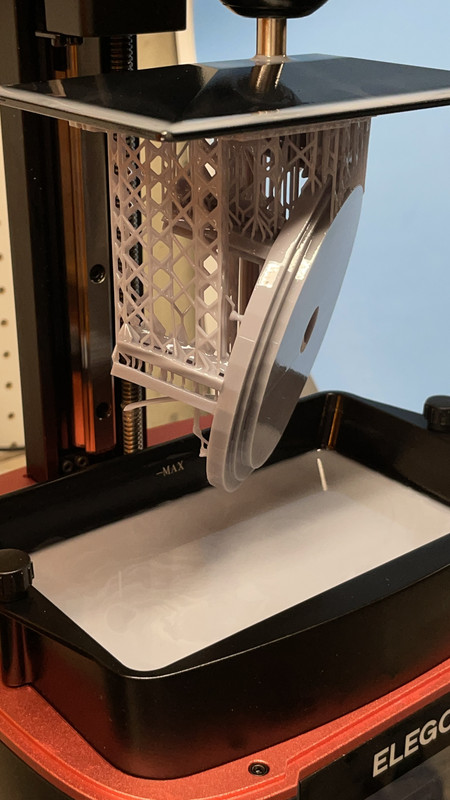
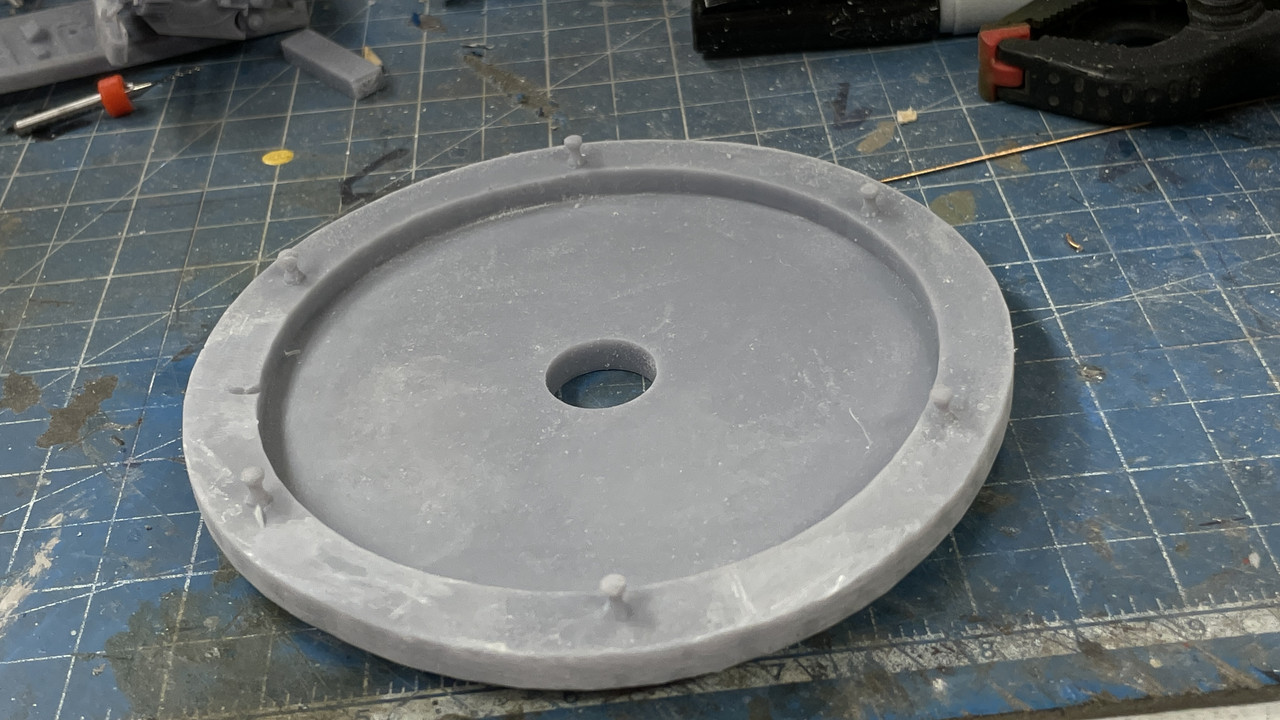
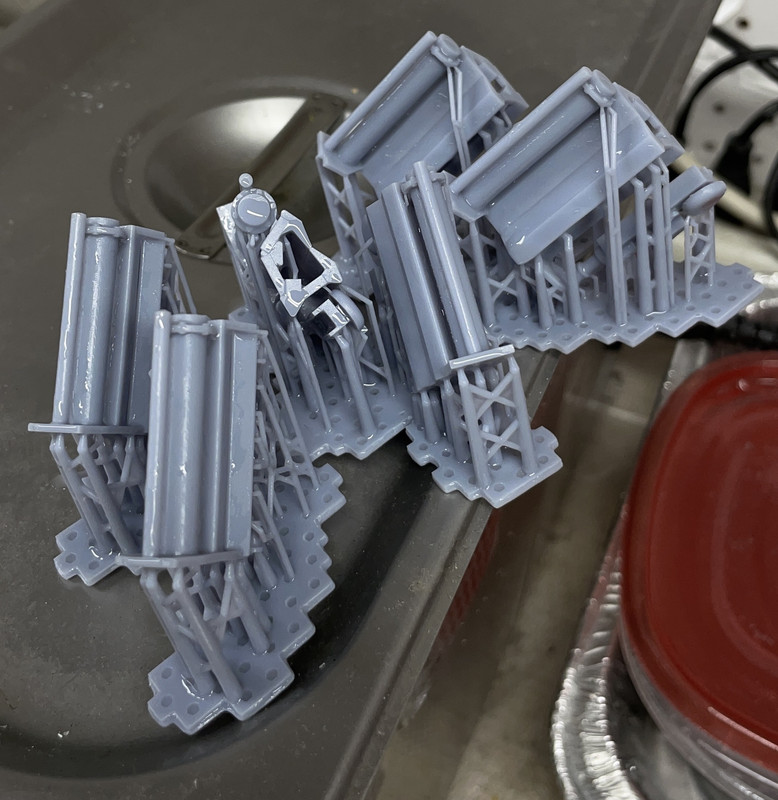
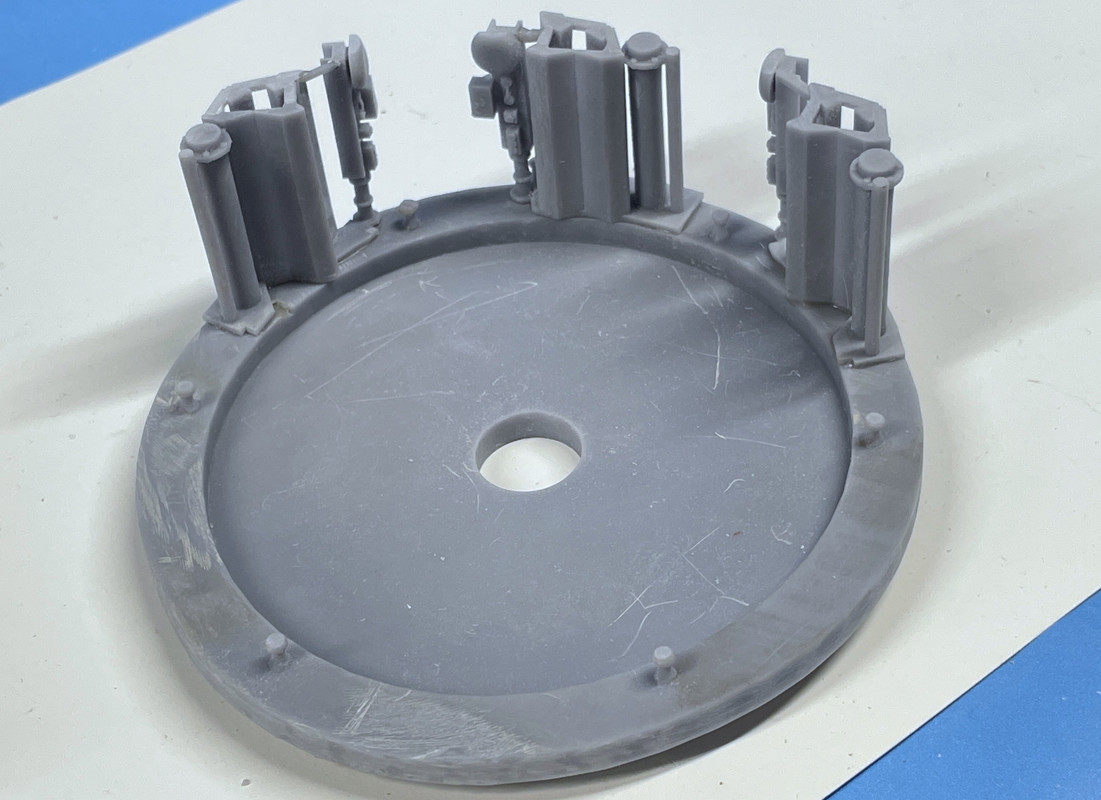

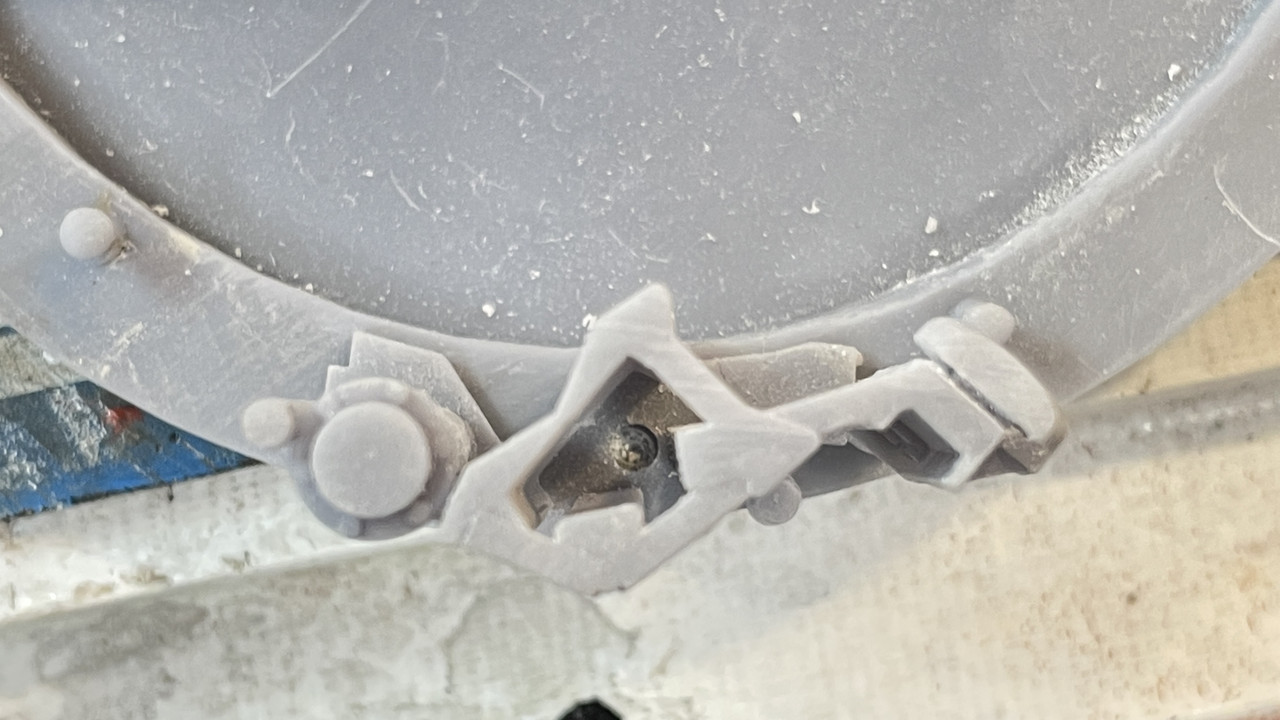
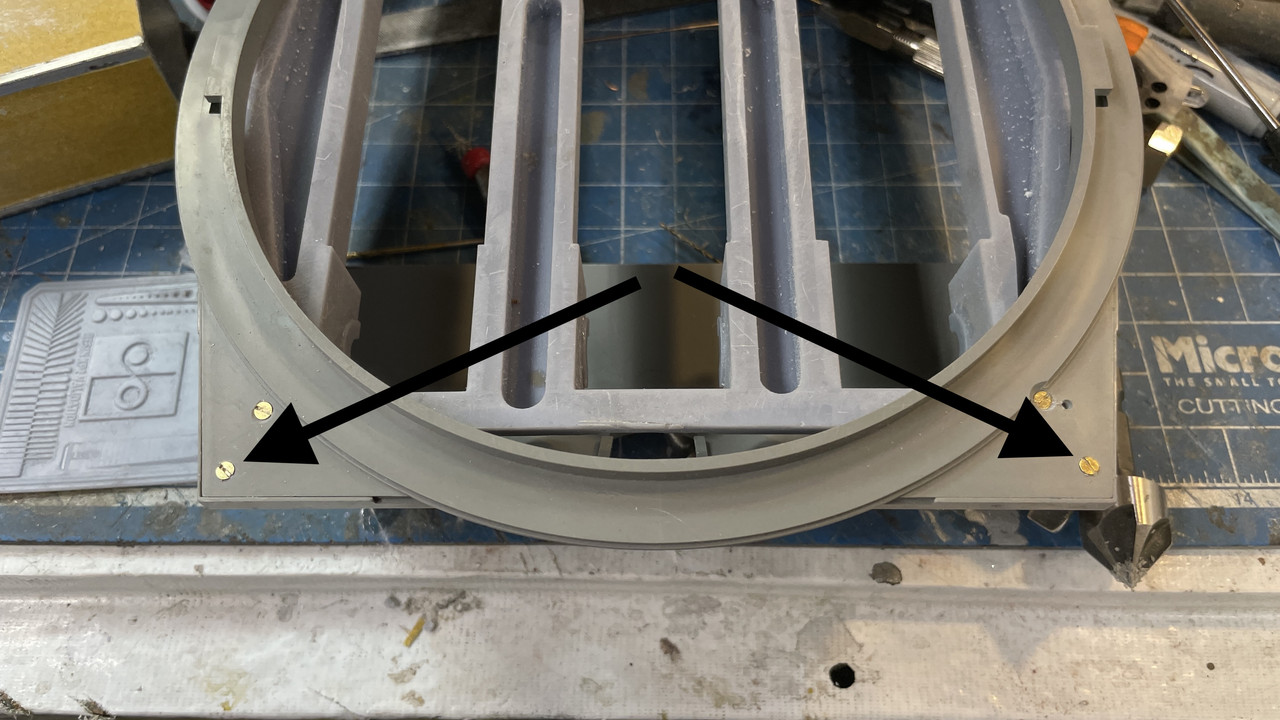 ![]
![]